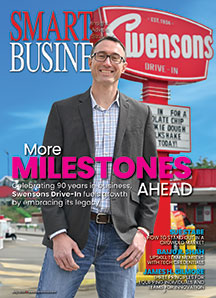Banner ads don’t work.
Sure, they may build a little brand awareness, but click-through rates of less than 1 percent do not bring the kind of attention advertisers dream of.
The banner ad has grown in size and prominence on various sites, moving from the traditional top-of-the-site spot to large rectangular areas midway down the page or even tall ”skyscraper” ads running along one side. It doesn’t seem to matter, though; results are still low.
Now come floating ads. These are already in use on many major sites, including Yahoo!. These ads are created on a transparent layer on top of the Web site and can include moving components or video. In one ad, for example, a car drives across the screen for a few seconds before disappearing into a little icon along the side.
”We have developed a three-phase method,” says Sivan Tafla, founder and CEO of Ad4ever, a multimedia marketing company. ”The first part is based on the teaser. This is a short teaser of some sort that stays on the screen for five to seven seconds. One of the problems on the market is how to grab the user’s attention, and that’s the teasers main purpose.”
After the teaser, a small reminder, usually in the form of an icon, stays on the screen for an additional 20 or so seconds. If the user doesn’t click on it, the reminder disappears. If the user does click on it, he or she enters the interactive portion of the ad, which could be more product information, an order form or even a game — all without leaving the original site.
”These types of ads are really not that much more expensive,” says Tafla. ”The main reason is because they are much more effective. From the media buyer perspective, you don’t have to buy so many impressions.”
One Ad4ever campaign resulted in a click-through rate of an astounding 25 percent.
While the ads are flashy and usually entertaining, Tafla says ad designers have to walk a fine line between grabbing the user’s attention and being annoying — which is why teasers are limited to seven seconds at the most.
”The other thing is the frequency,” says Tafla. ”You can’t bombard them 40 times with the same thing. If you want to show them the ad two or three times, you have to create a gap of 24 to 48 hours between viewings to minimize the level of intrusion.”
Ad content is downloaded after the Web page is fully loaded, and is done in the background so the user is unaware of it.
Because of it’s relative high cost, these types of ad campaigns are currently limited to companies with big media budgets, such as Chevrolet or Nextel.
One big advantage to the ads is that because they are completely interactive, a company can sell a product directly through the ad itself, without having to invest in a Web page or site to do so.
”It offers e-marketers a point-of-sale on the Net without any investment,” says Tafla. Todd Shryock ([email protected]) is SBN Magazine’s special reports editor.

